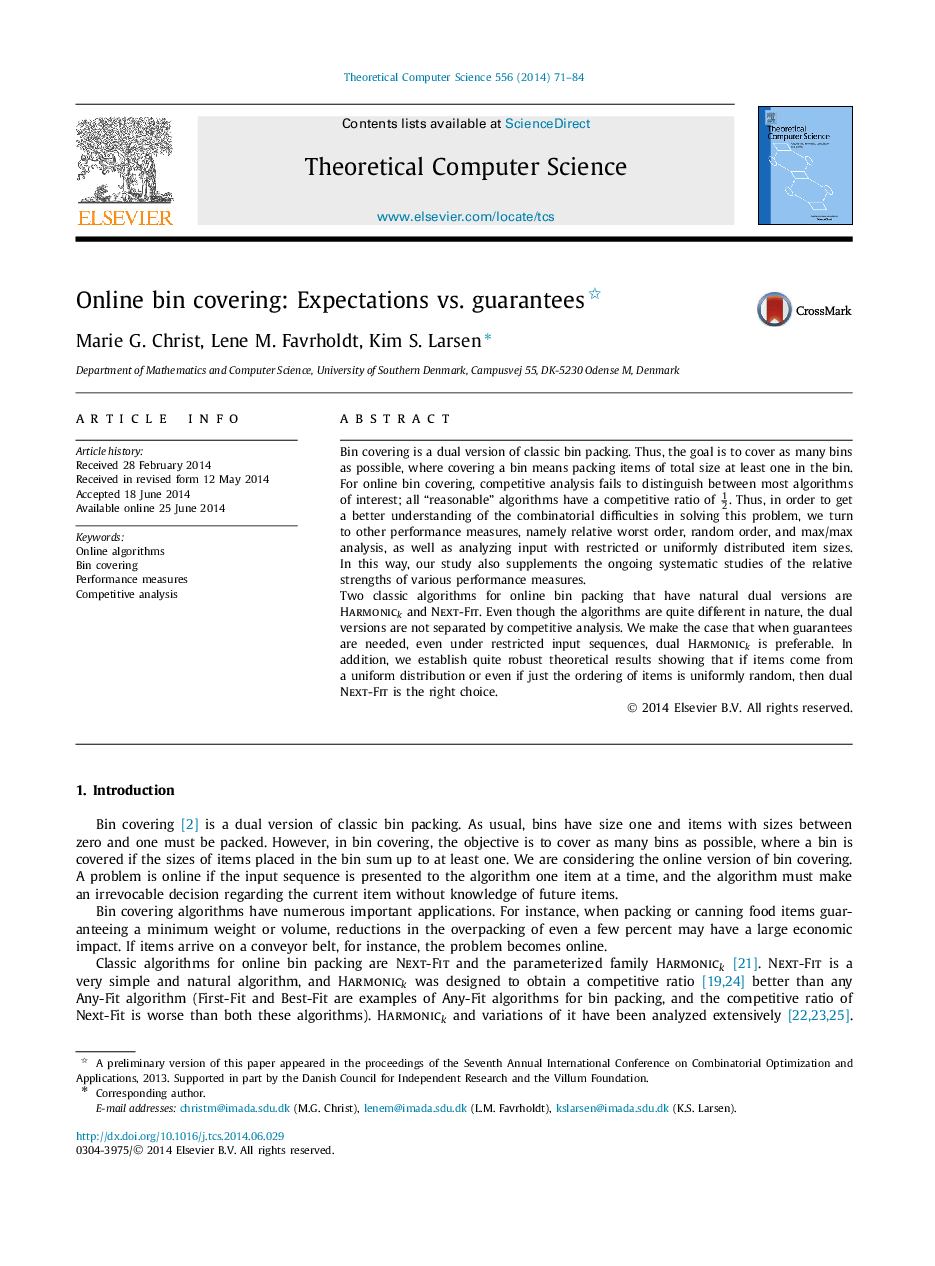| Article ID | Journal | Published Year | Pages | File Type |
|---|---|---|---|---|
| 434209 | Theoretical Computer Science | 2014 | 14 Pages |
Bin covering is a dual version of classic bin packing. Thus, the goal is to cover as many bins as possible, where covering a bin means packing items of total size at least one in the bin.For online bin covering, competitive analysis fails to distinguish between most algorithms of interest; all “reasonable” algorithms have a competitive ratio of 12. Thus, in order to get a better understanding of the combinatorial difficulties in solving this problem, we turn to other performance measures, namely relative worst order, random order, and max/max analysis, as well as analyzing input with restricted or uniformly distributed item sizes. In this way, our study also supplements the ongoing systematic studies of the relative strengths of various performance measures.Two classic algorithms for online bin packing that have natural dual versions are HarmonickHarmonick and Next-Fit. Even though the algorithms are quite different in nature, the dual versions are not separated by competitive analysis. We make the case that when guarantees are needed, even under restricted input sequences, dual HarmonickHarmonick is preferable. In addition, we establish quite robust theoretical results showing that if items come from a uniform distribution or even if just the ordering of items is uniformly random, then dual Next-Fit is the right choice.
